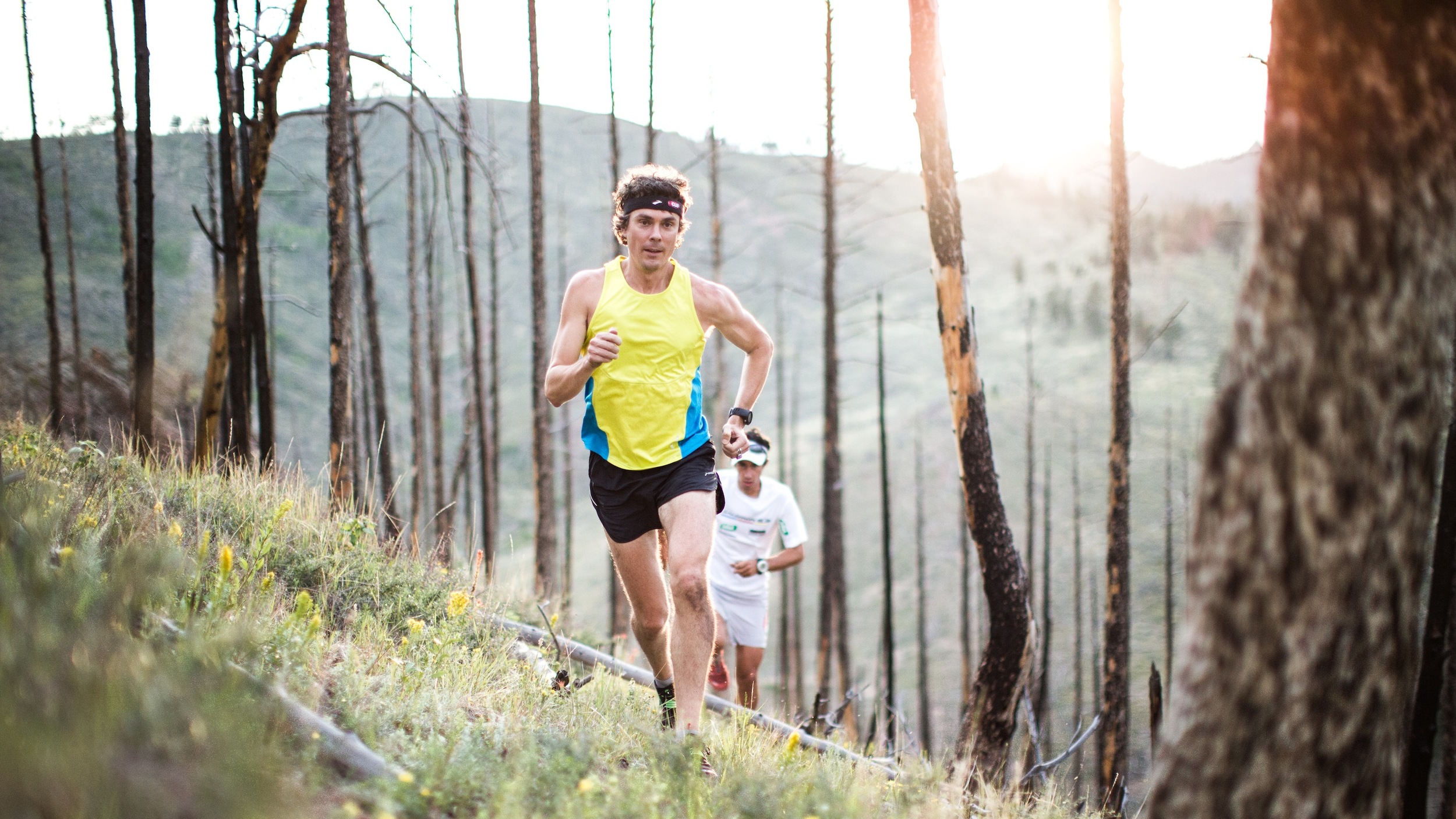
1. CONNECT:
If you’re an ultrarunner and you spend hours and hours alone on a daily basis, training in remote, unpopulated areas, running can be a solitary undertaking. It’s ironic, then, that some of the greatest and deepest joys in my running career have come from the people I have met and the things we have shared. You don’t have to be an ultrarunner to take advantage of the social rewards of running. Try running—at least on some of your routes—with a friend. Join a running club or weekly group run. Enter a 5K or 10K race. Do something for running that doesn’t involve running. Working at the finish line or at an aid station or joining trail work parties—all of which I’ve done—provided great ways for me to participate, to give back to the sport that’s given me so much.
Running can be a lonely activity. It can also introduce you to people worlds beyond your imagining.

1. STRETCH:
Some people needn’t bother with stretching. If you have good biomechanics, don’t spend a lot of time in front of a computer, and have the kind of lifestyle where you can nap or take a dip in the ocean whenever you want, you might be one of them. Otherwise, stretch.
Focus on the “runner’s five”:
1. Hamstrings
2. Hip flexors
3. Quadriceps
4. Calves
5. Iliotibial (IT) band, or connective tissue that runs from your hip down the outside of the leg.
These are the muscle groups that tighten even when people aren’t running, from bad posture, sitting, repetitive activities, and just living. Though there are myriad exercises to choose from for each area (I suggest The Whartons’ Stretch Book for clear instructions and diagrams), what’s important is to do them correctly and regularly.
For example, to stretch the hamstring, lie flat on your back and loop a belt or piece of rope around the ball of one foot, holding the ends of the rope in each hand. Keeping your legs straight, lift the roped leg (without pulling on the rope) as high as you can. Keep lifting until you feel a slight stretch in the back of the thigh, then use the rope to pull until the stretch is slightly—but just slightly—deeper. The stretch should be neither difficult nor painful. Hold for 2 seconds. Then relax and lower your leg to the floor. Repeat five to ten times.
This exercise uses the Active Isolated Stretching (AIS) technique, which I prefer and which is quick (you can do your daily routine in 5 to 10 minutes), easy, and effective. Whether you stretch before exercise or after (as I do), using the active isolated technique, there’s no excuse not to stretch.”
3. EQUIP:
The beautiful thing about running barefoot or in minimal footwear is that you are working with your body’s natural proprioception, the ability to sense your own position in space.
With nothing between you and the ground, you get immediate sensory feedback with every step, which encourages you to stay light on your feet and run with proper form. Some people who are recovering from injuries or who have structural anomalies or who just like their shoes will keep lacing up. But whether you wear shoes or go barefoot, what’s important is that you pay attention to your form. If running barefoot helps with that, it’s beneficial.
You want to try barefoot running? Before you toss the shoes and enter a 10K, remember: slow and easy. When runners do too much too soon, injuries often result.
First, find an area of grass or sand and take easy 5- to 10-minute runs once or twice a week. Remember, easy. Don’t worry about speed at all. You’re working on your running form. As long as it feels good, increase the length of one of the runs until you’re up to a 20- to 45-minute barefoot run once a week.
I like to do 2 to 3 miles on the infield of a track or in a park after an easy run day or for a cooldown run after a track workout.
Two important things to remember—other than starting slow and easy—are that you don’t need to run barefoot all the time to get the benefits. And you don’t need to run completely barefoot. Lighter weight, minimal running shoes and racing flats will give you a similar type of feel as running barefoot. It will all help you with form. I have been running most of my long training runs and ultra races in Brooks racing flats for almost a decade, even Badwater and Spartathlon. Racing flats and minimal shoes provide the best of both worlds: comfort and performance.
SHOE COLLABORATIONS WITH BROOKS:
4. FUEL:
One of the biggest questions I had as an ultrarunner contemplating a vegan diet was how to get enough protein. Here are a few of my tricks:
In my breakfast smoothie, I add some nuts and a hit of plant-based protein powder (brown rice, hemp, pea, or fermented soy protein). I’ll also have a grain source for breakfast, such as sprouted-whole-grain toast with nut butter or sprouted-grain cereal or porridge. Lunch is always a huge raw salad—I love my Lacinato kale—and I’ll up the protein content with a soy product (tempeh, tofu, or edamame), a big scoop of hummus, or maybe some leftover cooked grain or quinoa. Dinner might be beans and whole grains, maybe some whole-grain pasta. If I didn’t have soy at lunch, I might have it with dinner. Add in some Clif Bars and trail mix as snacks throughout the day and some soy- or nut-based vegan desserts and I get more than enough protein to maintain my muscle tone and help my body recover.
I seek out traditional whole foods rather than highly refined meat substitutes. I look for products that have been sprouted, soaked, or fermented to help break down the indigestible cellulose in plant cell walls. Among soy sources, I favor tempeh, miso, and sprouted tofu, which are all more digestible and have less phytoestrogen (a naturally occurring substance that some—in spite of medical evidence to the contrary—suspect might mimic estrogen’s effects in humans) than isolated soy protein. I eat sprouted-grain breads and tortillas, and at home I often soak my whole grains and beans before cooking.

5. STRIKE:
In an ideal world, all runners would land on their forefoot or midfoot when they run. In an ideal world, though, all runners would be lean, healthy, and have spent most of their lives clocking 5-minute miles.
There’s no question that forefoot striking is more efficient than heel striking. It uses the elasticity of the Achilles tendon and the arch of the foot to translate the body’s downward force into forward motion. Less energy is lost to the ground. It’s also a given that landing on the forefoot, as barefoot runners do, prevents the heel striking that cushioned shoes enable, which can lead to so many joint and tendon injuries.
But it’s also true that it’s not a perfect world. Beginners run. Out-of-shape people run. And for them forefoot striking might increase the risk of tendonitis or other soft tissue injury. That’s especially true for anyone who hasn’t grown up running barefoot through rural Kenya.
Most researchers would say that a midfoot landing is the most efficient and shock-absorbing technique. But there are people who fall on both ends of the spectrum—heel strikers and those who run on the balls of their feet—and they do fine.
What’s important isn’t what part of the foot you strike but where it strikes. It should land slightly in front of your center of mass or right underneath it. When you have a high stride rate and land with the body centered over the foot, you won’t be slamming down hard, even if you connect with the heel.
6. RECOVER:
Regular running is satisfying in itself. If you’re the competitive type, even greater satisfaction lies in running faster and longer, in challenging yourself. Progress can be a great motivator and a great incentive to keep exercising.
If you want to improve as a runner, you can (and should) do supplemental training, which involves strengthening, flexibility, and technique work. But the simplest way to improve is to run faster. And the way to do that is to train yourself to run harder, the way I did during my long climbs at Mount Si.
Here’s how: After you’ve been running for 30 to 45 minutes at least three times a week for six to eight weeks, you’re ready to start running occasionally at 85 to 90 percent of your physical capacity, or the point where lactate is building up in your muscles but your body is still able to clear and process it.
Build to where you can maintain that lactate threshold level for 5 minutes. Then take 1 minute of easy running to give the body time to recover, then repeat. As you progress, increase the number of the intervals and their length while maintaining a 5:1 ratio between work and rest. So you would do 10-minute intervals of hard running followed by 2-minute breaks, or 15 minutes of hard running followed by 3 minutes of rest, and so on.
After four to six weeks, you’ll be able to maintain this effort level for 45 to 50 minutes. And you’ll be faster.

More training tips can be found in Eat & Run
My Unlikely Journey to Ultramarathon Greatness





